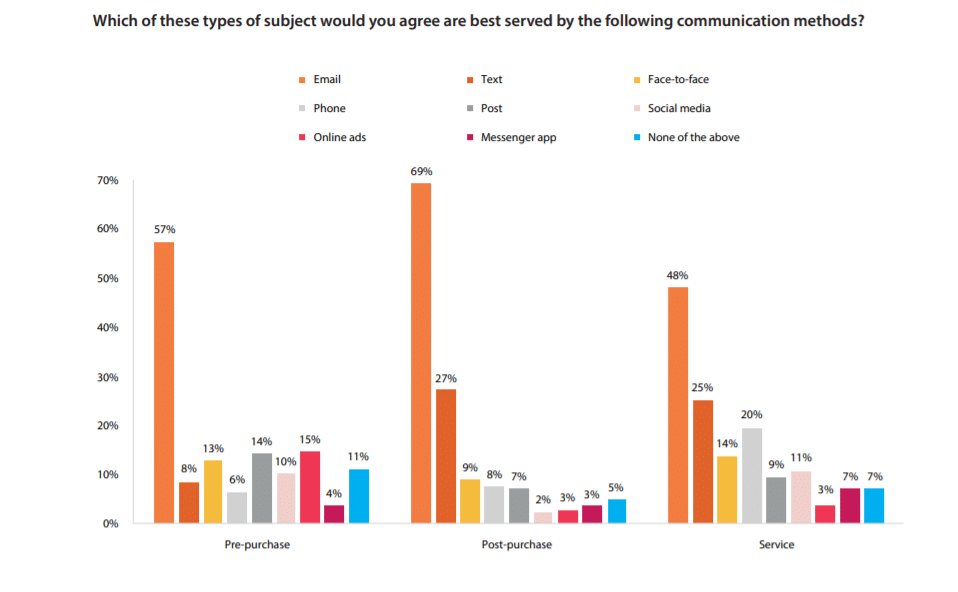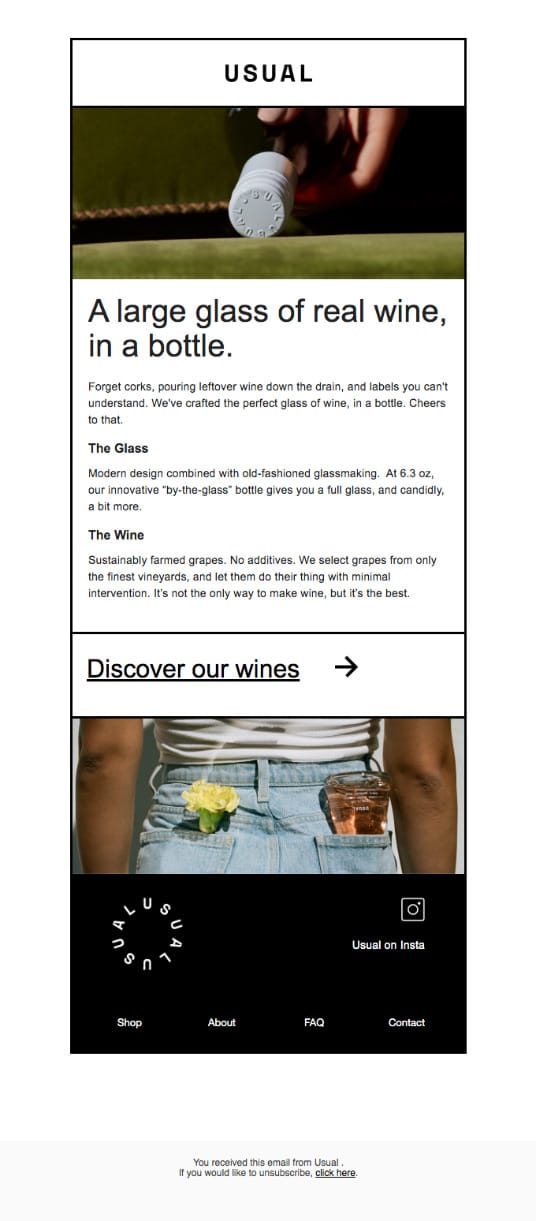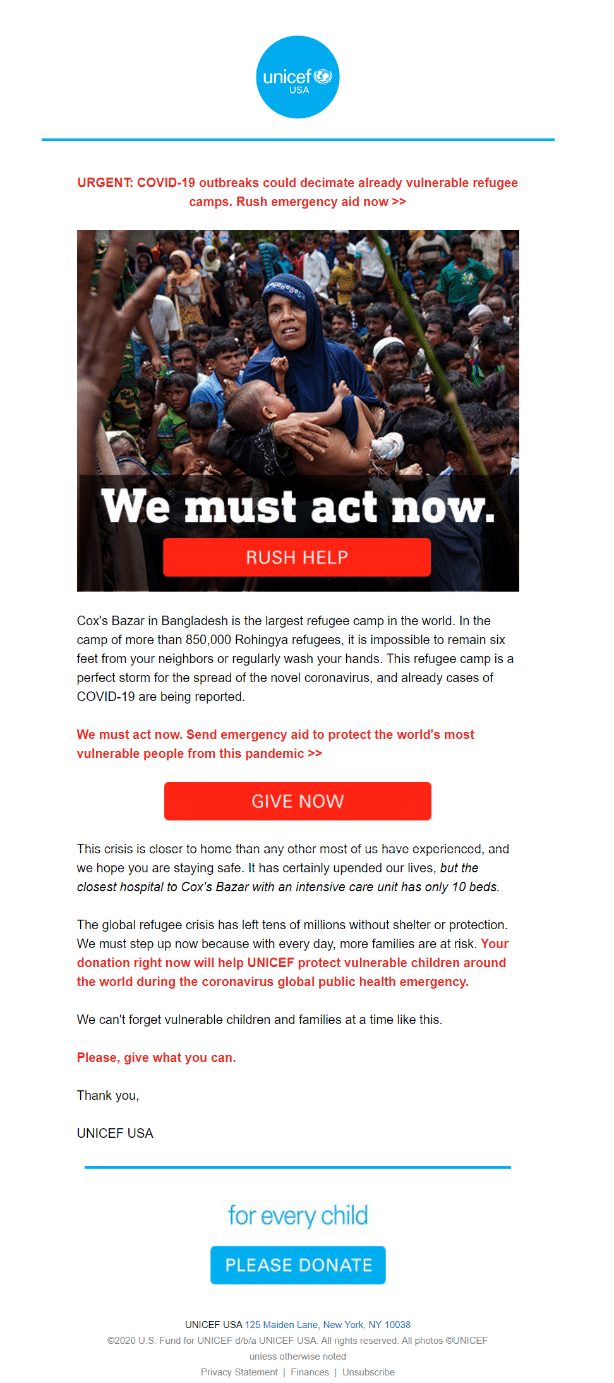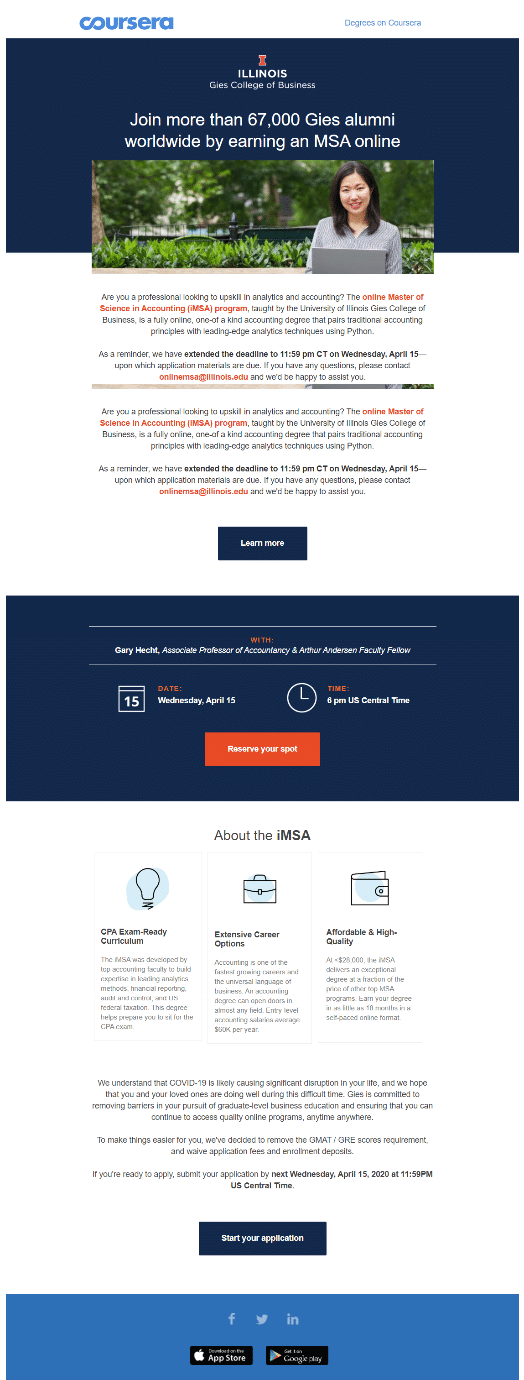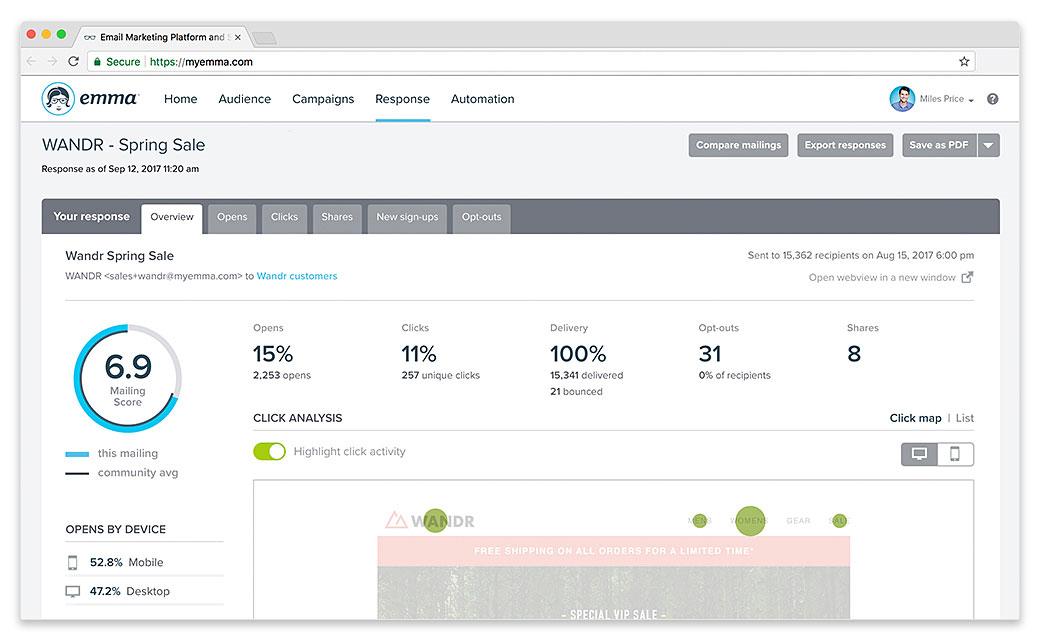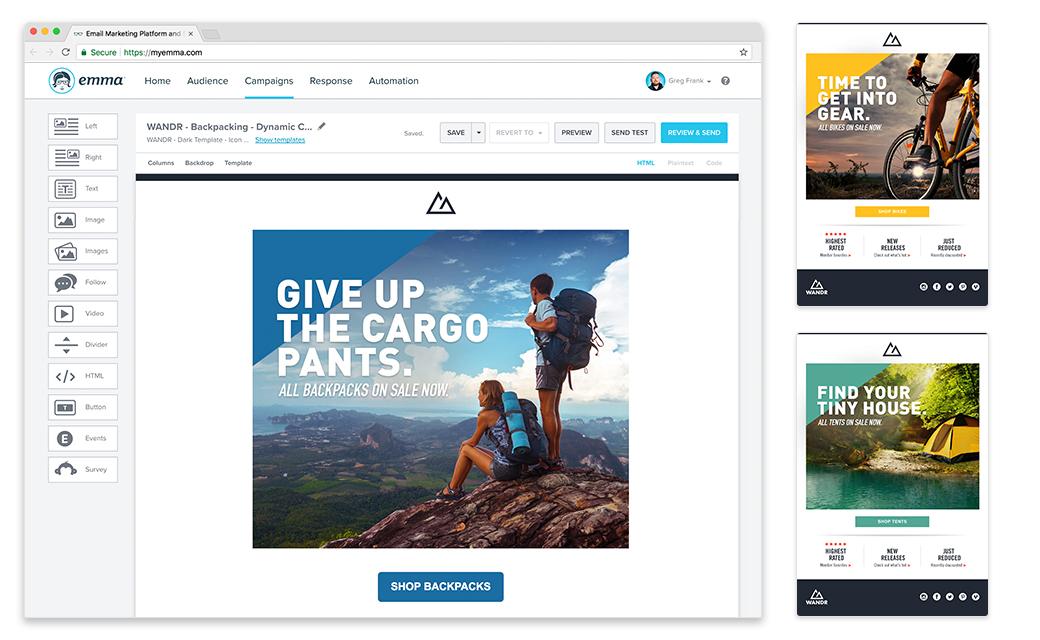Lead nurturing 101: Why it’s important and what you need to know
Not everyone who visits your website is ready to purchase or sign up.
In fact, across all industries, the average conversion rate is just 2.35%. Yes, that means over 95% of your landing page visitors won’t convert on first contact.
Here’s the thing: That’s okay.
Technology gives you the tools you need to build relationships and earn the trust of leads.
This post will explain what lead nurturing is and why it’s so vital. It’ll also provide tips for building relevant and effective lead nurturing email strategies.
What’s lead nurturing and why is it important?
Even if most visitors aren’t ready to buy, you still don’t want them to slip through the cracks forever, right?
Lead nurturing allows you to stay in contact with visitors who might otherwise have that outcome. With lead nurturing, you use a carefully crafted strategy to gently guide your subscribers toward a conversion.
In the business-to-business (B2B) realm, lead nurturing is the norm. B2B purchases are high value, high risk, and involve long buying processes with several team members.
But business-to-consumer (B2C) companies can reap the benefits of lead nurturing too. Automation and digital marketing technology have made it easier than ever to stay in touch with your leads through personalized content.
However, many retailers, universities, and nonprofits haven’t caught on to the wonderful concept of lead nurturing. Many brands will stay in contact through email and social media, but their content is mainly promotional or focuses on branding.
Lead nurturing is strategic. It also involves a balance of promotional, entertaining, informational, and useful content — leaning more toward the latter.
The idea is to show leads the value you provide. Eventually, (hopefully) they’ll take the plunge and convert.
Even among consumers, lead nurturing can be a lengthy process — so don’t get discouraged. Sixty-three percent of consumers who sign up for your list won’t be ready to spend money with you for three months.
Keep your eyes on the prize. Focus on providing leads with relevant and enriching content.
9 tips for successful lead nurturing through email
Email is the perfect tool for lead nurturing for a few reasons:
-
It provides a direct line of communication with leads.
-
People overwhelmingly prefer email for communicating with brands pre-purchase.
-
Email service providers offer a wide range of cutting-edge, artificial-intelligence (AI)-driven tools.
-
You can easily incorporate data to personalize your campaigns.
Source: The Direct Marketing Association
1. Gently introduce leads to your brand with drip campaigns
Automation makes it easy to set up a series of emails for your subscribers. To nurture leads, you’ll send new subscribers a strategic series of campaigns. You might follow a progression like:
-
Welcome message
-
Your brand’s mission
-
Information about your industry
-
Your best blog posts or resources
-
Testimonials or case studies
Welcome emails see a 50% open rate on average — some of the highest of any campaign. Plus, 74% of new subscribers expect brands to send a welcome email.
Drip campaigns form the backbone of your lead nurturing strategy.
The brand Usual gets straight to the point with a useful campaign explaining the benefits of their product.
Source: Really Good Emails
2. Stick with one topic and one call to action (CTA) per email
People get overwhelmed when presented with too many choices — it’s called decision fatigue. Likewise, you can expect subscribers to get confused if presented with too many ideas and links inside an email.
It’s best to stick with one main idea and one CTA. If you find yourself writing copy that explores two topics, design a second email.
Make sure what you write is concise and conversational. Avoid sounding like your main goal is to sell. Instead, focus on building a relationship with one-on-one conversations.
UNICEF already does a fantastic job of being focused. The example below doesn’t mince words and includes a single CTA (in two locations).
Source: Gmail
3. Personalize your lead generation campaigns based on lead magnet
If you’re wondering where to start personalizing your email content, look at your lead magnets.
What enticed a subscriber to sign up? What can you learn about their problems, needs, and state of mind?
You can also use blog post topics to understand these things about your subscribers.
Consider setting up unique drip campaigns for all your lead magnets. Sixty-seven percent of customers expect high-level personalization from brands, so these campaigns supercharge your lead nurturing strategy.
Coursera sent this email to a subscriber who browsed their degree programs, and they made sure this hit inboxes while the topic was timely.
Source: Gmail
4. Show your value with freebies
Costco doesn’t set up those tasty tables on the weekend without a strategy. Free samples can boost sales by 2,000% — and for a few reasons. For starters, people experience the value of your product.
However, people also feel compelled to reciprocate honorable deeds: like buying something from your brand after getting something for free. Freebies make people feel positive toward your brand.
Finally, free items can also help your leads make decisions. Going back to decision overload, offering a free sample of a product can help guide your leads toward conversion.
5. Avoid spamming your leads
Forty-five percent of consumers say they unsubscribe from mailing lists because they receive too many emails — either in general or from the brands in question.
No brand likes unsubscribes, especially during a lead nurturing strategy.
You can avoid spamming or annoying leads by asking them to set up a preference center as soon as they subscribe. Give subscribers the option to choose how often they receive your emails.
Make sure to include a link to your preference center at the bottom of every email. That way, if a subscriber changes their mind about the frequency, they can update it right away.
6. Offer helpful and informative content
Your lead nurturing campaigns should focus on adding value to the lives of your subscribers. Keep the promotional content to a minimum during this stage — at least in your emails.
With email, use the intimate environment to send personalized blog posts, e-books, podcasts, and other interesting materials. It may be wise to limit your promotional content (like coupons and specials) to social media marketing during this stage.
Don’t forget to keep up with newsletters, too. Just make sure you don’t include the word “newsletter” in your subject lines. It can decrease open rates by a whopping 30%. Instead, use carefully crafted subject lines that intrigue leads and explain what’s inside.
7. Integrate your data with other sources
A successful lead nurturing campaign relies on data. Fortunately, most email service providers make it easy to integrate data from several sources, like:
-
Social media accounts
-
CRM software
-
On-site analytics
-
Event scheduling apps
With this data, you can study your leads’ behaviors across those apps and provide personalized email marketing content. You can also meet your leads halfway with relevant content across different platforms.
8. Optimize your lead nurturing campaigns with heat maps
Your lead nurturing campaigns are long-term strategies. Once analytics start rolling in from a few subscribers, you can track the results and optimize your future campaigns.
Heat maps are a great option for tracking engagement and potential frustration in your emails. Click-based heat maps show exactly where people are clicking.
Source: Emma
9. Send leads dynamic content
Personalization is vital for providing leads with relevant content. Using behavioral data, dynamic content automatically adjusts itself based on the subscriber.
Instead of sending the same drip campaign to every subscriber, dynamic content allows AI to take control. You design a single email and every recipient gets unique content.
This is especially useful for reaching leads in different locations or within different segments. Here’s an example of what dynamic content could look like.
Source: Emma
Wrap up
Traditionally reserved for B2B, consumer brands can (and are) taking advantage of strategic lead nurturing. Email provides an excellent lead nurturing vehicle: It offers several innovative personalization tools.
To make the most of your lead nurturing strategy through email, keep the following tips in mind:
-
Use drip campaigns to gently guide your leads down the customer journey.
-
Stay focused with one CTA per email.
-
Personalize your drip campaigns based on where a subscriber signed up.
-
Offer freebies to demonstrate your value.
-
Take steps to prevent spamming leads.
-
Stick with informative, valuable, and conversational content.
-
Integrate data and analytics from other sources.
-
Run split tests for your subject lines.
-
Dabble in dynamic content.
-
Optimize every landing page for your campaigns.
Making sure your subscribers are engaged is key to a winning lead nurturing strategy. Check out our seven-step guide to building a healthy email list.
MOST RECENT ARTICLES
Want to engage your audience and grow your brand? Try Emma's robust easy-to-use product today.

